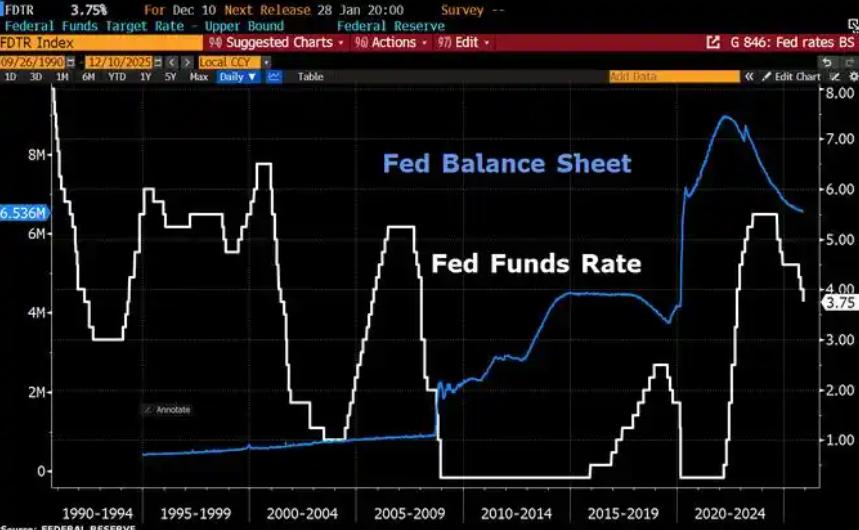
In July 2025, the U.S. business sector is intertwined with complex political and economic environments, showing multifaceted and uncertainties, and the development paths of various industries are deeply affected by many factors.
1. Turbulent macroeconomic situation
In July, U.S. economic data was mixed. White House data showed that during Trump's second term, the core inflation rate was stable at 2.1%, in line with the Fed's target; wholesale prices were stable in June, industrial production grew by 0.3%, exceeding expectations, manufacturing output grew by 1.8% in the first five months, retail sales grew by 0.6% in June, consumer confidence rose sharply in July, initial jobless claims fell for five consecutive weeks, and the number of housing starts and permits in the real estate market in June exceeded expectations. These positive signals indicate that the U.S. economy has recovered in some areas.
However, the economic outlook is still overshadowed. The continued fermentation of the trade war has cost the U.S. economy a high price. In June, the U.S. Leading Economic Index (LEI) fell by 0.3% to 98.8 (2016=100), indicating that the pace of economic growth may slow down. In addition, the U.S. Treasury Department said that due to the low government cash reserves in early July and the expected reduction in future cash inflows, net borrowing will exceed $1 trillion in the third quarter of 2025 (July to September), far higher than the expected value of $554 billion announced in April, highlighting the heavy pressure on the U.S. government to repay debts and maintain spending.
2. Differentiated industry development trend
(I) Technology industry: Giants’ game and innovation challenges coexist
The performance of giants in the technology industry is significantly differentiated. After the U.S. stock market closed on July 23, Google’s parent company Alphabet disclosed its second quarter financial report for 2025, with outstanding performance, and both revenue and profit exceeded expectations. Google’s core search business grew strongly, with revenue increasing by more than 11% year-on-year, and cloud computing business revenue reached $13.6 billion in the second quarter, a year-on-year increase of 32%, in order to maintain competitiveness. In sharp contrast, Tesla's second-quarter revenue plummeted by 12% year-on-year, the largest quarterly decline since 2012. The sudden change in the electric vehicle tax credit policy and the impact of tariffs will make Tesla difficult in the next few quarters.
(II) Retail industry: Anxiety and dilemma under the shadow of tariffs
Summer is a critical period for determining Christmas gift orders and prices, but the US retail industry is shrouded in uncertainty about tariffs. US retailers usually start winter holiday purchase plans in January and complete most orders by the end of June. However, Trump's erratic tariff policy has caused the toy industry to be particularly hard hit. Due to tariffs, manufacturers have postponed increasing production, resulting in delayed arrival of holiday toys. A survey by the National Retail Federation of the United States showed that 67% of respondents have started purchasing school supplies, and 51% of households are worried that tariffs will lead to price increases. Consumers may face the dual dilemma of commodity shortages and price increases.
(III) Financial industry: The dawn of recovery coexists with potential risks
Goldman Sachs' investment banking business rebounded beyond expectations, and the second round of 46,000 large-scale layoffs was canceled this year, showing signs of recovery in some businesses in the financial industry. However, overall economic uncertainty, such as the instability of trade policies and expectations of slowing economic growth, still poses potential risks to the financial industry, seriously affecting the credit decisions and investment strategies of financial institutions.
3. Business dilemma under policy influence
The Trump administration's trade policy continues to have a broad and far-reaching impact on American business. Trade negotiations with the European Union have entered a white-hot stage. August 1 is the deadline for reaching a 15%-20% tariff agreement. If there is no agreement, Trump threatens to impose a 30% tariff, which will reshape the global trade pattern. The supply chain, costs and market sales of American companies will all suffer. The tariff threats issued by the United States to many trading partners have caused market fluctuations. International copper prices have soared due to expectations of tighter global copper supply, and bond yields have fluctuated synchronously, reflecting investors' concerns about inflation risks and interest rate trends. In addition, the U.S. Department of Education announced a targeted investigation of Duke University, accusing it of violating Title VI of the Civil Rights Act of 1964. This incident may also have a ripple effect on related academic and business cooperation.
July 2025 Opportunities and challenges in the U.S. business sector collide fiercely. Various industries are struggling to survive and actively adjusting their strategies under the complex economic environment and policy changes. In the future, the development of American business will be highly dependent on the opportunities and changes brought about by trade policy trends, changes in economic data, and technological innovation. How to find a way out of the difficulties will be a key issue that the American business community needs to solve urgently.

Since 2022, the Fed has cumulatively reduced its balance sheet by $2.4 trillion through quantitative tightening (QT) policies, leading to a near depletion of liquidity in the financial system.
Since 2022, the Fed has cumulatively reduced its balance sh…
On December 11 local time, the White House once again spoke…
Fiji recently launched its first green finance classificati…
Recently, the European Commission fined Musk's X platform (…
At the end of 2025, the situation in the Caribbean suddenly…
The U.S. AI industry in 2025 is witnessing a feverish feast…